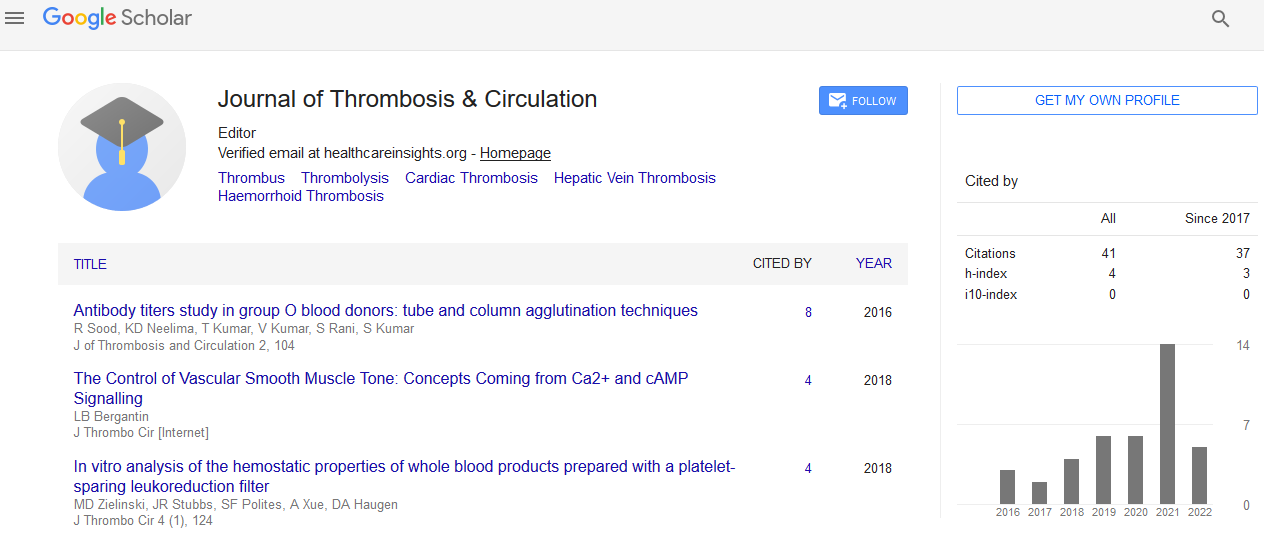Indexed In
- RefSeek
- Hamdard University
- EBSCO A-Z
- Publons
- Google Scholar
Useful Links
Share This Page
Journal Flyer

Open Access Journals
- Agri and Aquaculture
- Biochemistry
- Bioinformatics & Systems Biology
- Business & Management
- Chemistry
- Clinical Sciences
- Engineering
- Food & Nutrition
- General Science
- Genetics & Molecular Biology
- Immunology & Microbiology
- Medical Sciences
- Neuroscience & Psychology
- Nursing & Health Care
- Pharmaceutical Sciences
Abstract
Paroxysmal Cold Hemoglobinuria: Role of hospital Transfusion Medicine and Immunohematology
Sood R*, Suman N
Background: Paroxysmal cold hemoglobinuria (PCH), an autoimmune hemolytic anaemia caused due to polyclonal IgG anti-P autoantibody binding to red blood cell surface antigens and is characterized by hemoglobinuria, typically after exposure to cold temperatures. Case Presentation: An 84-year-old female patient started developing breathing difficulty off and on with generalised weakness and loss of appetite. There was continuous fall in hemoglobin and continuous evidence of intravascular hemolysis since last 15 days. After ruling out much common diagnosis, Donath – Landsteiner Test was done which showed Immunoglobulin G, IgG, antibodies, appearing at 4°C and hemolysing at 37°C in the presence of complement. Peripheral smear showed anisopoikilocytosis and spherocytosis. Reticulocyte count was on the lower side (0.5%). Forward and reverse blood grouping showed no group discrepancy. Direct antiglobulin test (Direct Coombs test, DAT) was positive with the monoclonal C3 antisera and negative with the monoclonal anti-IgG. ICT, Indirect Coombs Test, was negative. Syphilis was tested negative by Treponema pallidum hemagglutination assay (TPHA).
Published Date: 2019-11-18; Received Date: 2019-10-29

